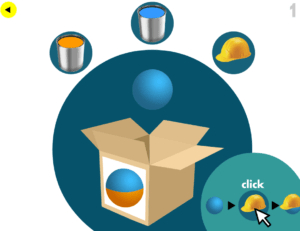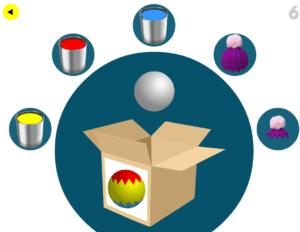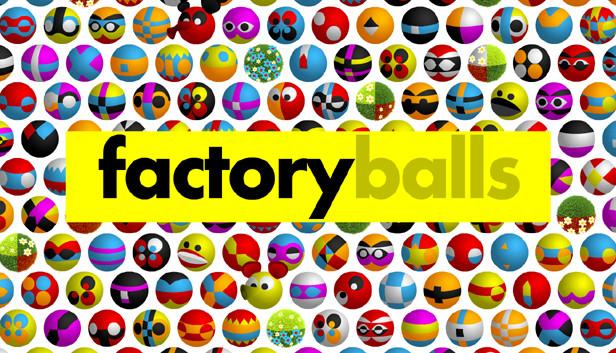The Basics
Game: Factory Balls is a casual indie puzzle game where players use a combination of moves to paint balls and match the desired image.
Created by: Factory Balls was initially developed for a “Casual Gameplay Design Competition” on jayisgames.com by Bart Bonte. The game has since evolved from a “14-level Flash game” to “a classic puzzle game with hundreds of original levels”.
Platforms: PC, Mac, iOS, Android
Target Audience: Factory Balls definitely appeals to a broad audience. I recall first playing the game as a child and I still enjoy playing the game now. The rules are simple enough for a 6-year-old to follow along, but minor modifications such as more colors and stencil objects quickly transform the game into a series of increasingly tricky puzzles many would find challenging. The game is casual and can be played quickly (one level at a time), so anyone with the desire to can pick it up and play.
Formal Elements

The objective of the game is immediately apparent because of the incredibly simple interface with an image of a complete ball and icons of paints and stencils that you can click. The game shows a brief tutorial and it’s clear that players are trying to match the blank ball to the complete ball.
As a single-player game, the player is playing against the game (the challenge of the puzzles). There are a few basic rules that shape the entire game: only one new color or stencil can be clicked at a time, you win when you exactly match the image, and only certain combinations of stencils can be used at once. Resources at the players’ disposal include the reference image and the paints/stencils. Since the game does not require any exploring of a physical space, the boundaries were just the confines of the puzzle.
Types of Fun

Factory Balls heavily relies on challenge and sensation to create a fun experience. As a puzzle game, it is essentially a series of “obstacle courses” to strategically get from a blank ball to a target ball. We are encouraged to solve these seemingly simple puzzles to advance to future levels. There is an innate sense of satisfaction from matching increasingly complicated target balls. Sensation is also critical as the visual painting is fun and the sounds of paints are intriguing, especially for younger players.
Strengths
The simplicity of the game is a great strength – even after years of not playing the game, I picked it back up within 20 seconds. Additionally, the incorporation of new stencils and more colors kept the game fun for longer than expected.
Failures & Improvements
Although the new stencils kept me entertained for an extra few minutes, the core gameplay did not change, so within 15 minutes I was no longer engaged. If there were different types of challenges that were added such as time constraints, timing puzzles (clicking a succession of stencils and colors quickly), or different types of paint (e.g. permanent paint), the game could have a longer playtime!



